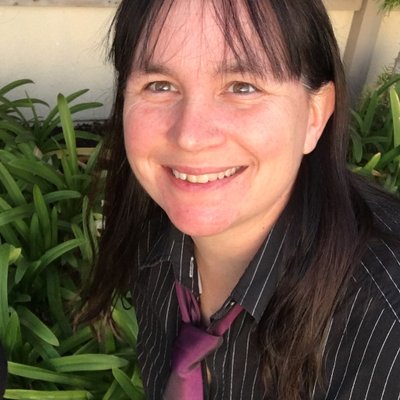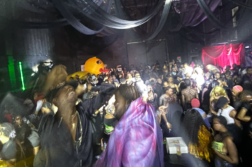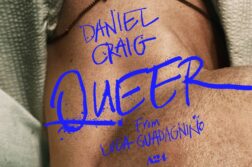
When I began researching the book Public Faces, Secret Lives: A Queer History of the Women’s Suffrage Movement, people warned me that I wouldn’t find much. They weren’t wrong. There was so much information that has been lost over the years. These women who had so publicly fought for the vote often lived very different private lives. Publicly, they dedicated themselves to reform, building movements for equality and social change. Privately, they had passionate queer love affairs, creating their own chosen families to support each other.
Alice Morgan Wright was one of those queer suffragists. She grew up in Albany, New York and went on to become a sculptor, an advocate for women’s rights, and a leader of the animal rights movement. Biographers frequently noted that Edith J. Goode was her closest friend and constant companion. In searching for more about their relationship, I scoured Alice’s extensive collection of materials. On the surface, there wasn’t much. There were no letters between them. There was no hard evidence to indicate little more than a friendship.
This only made me more curious. Alice’s collection included a large cache of letters she had written to family and friends. If Edith was such a close friend, why was there no correspondence between them?
A careful reading of all of Alice’s correspondence revealed a hint in a single line of a letter between Edith and a friend. Alice had fallen ill and fearing that she didn’t have long to live, Edith wrote: “I want to read every scrap of Alice’s memoranda I have assembled as well as her correspondence with me over the years.”
This was the proof that there were letters between them, or at least there once was. Although this finding offered no definitive answer about their relationship, the archival silence seemed to speak volumes. Edith’s choice to remove the letters was an important clue.
For most suffragists, living their lives openly was not possible. Some, especially those who lived into the virulently homophobic post-war era, chose to destroy evidence of their queer lives by burning their personal letters and diaries. In other cases, relatives, descendants, or biographers erased aspects of a suffragist’s queerness fearing that these facts would tarnish their reputation. Perhaps that is what Edith chose to do in this case.
But, I didn’t want to give up on the story of Alice and Edith. The more I searched, the more I found. I read through Alice’s old tattered school notebooks and examined drafts of creative writings in her journals. Individually, they weren’t much, but collectively, they revealed a very queer life.
I found poems from her college days that she had spent at Smith with Edith. One seemed especially revelatory of Alice’s dreams:
There is a land where duties cease,
Where life is but a fairy song,
Where zephyrs breath, the whole day long
The harmony of perfect peace . . .
For there the king am I, and thou
The queen of all that realm as fair.
Our feathered minstrels of the air
Sing odes to us from branch and bough . . .
And side by side, thy hand in mine,
We wander through the poppy field.
The rainbow cliffs above us yield
The splendours of their glowing line.
But soon grows dim that mystic light
And dies the rosy gleam so sweet,
For on the ground beneath our feet
I see our shadows still and white.
The blue lake sinks beside the lea,
The poppies turn from red to gray,
The rainbow mountains fade away,
I see dissolve the endless sea.
And now, my strange short reign has ceased
In vain my heart to thine still cries
The love-light dies within thine eyes
As comes the day up from the east.
The world of things that are appears,
As fades the world of things that seem.
But sweet the memory of my dream
You with me through the waking years.
This poem may be interpreted as an expression of queer desire and as a coming to terms with the reality of a love that could not be, at least not freely in the light of day.
Alice apparently didn’t get the girl. Or, at least not yet.
After college, Alice went to Paris to study art and became active in the militant suffrage movement. Her letters from this time period reveal that she had a crush on the suffragette leader Emmeline Pankhurst whom she met on the steamship to Europe. Alice was so enamored she traveled to London to participate in Pankhurst’s protests. She shocked her friends and family back home when they read in the newspapers that Alice was arrested holding a stone preparing to throw it through a window to demand votes for women. She went to prison along with over 200 suffragists arrested that night where they launched a hunger strike to protest the government’s oppression of women.
When Alice finally returned to the US, she continued her activism in the suffrage movement, reuniting with her college friends, including Edith. They joined together in a life of activism on behalf of women in the National Women’s Party and later as founders of the National Humane Education Society fighting for animal rights. I knew that they shared a passion for activism. I could only guess what other passions they shared.
A final hint from the archives seemed to answer the question. One of the last items in Alice’s collections that I examined was a book of poems she wrote in the latter half of her life. A number of them were written on Valentine’s day for an unspecified love.
My hands are torn by the spokes I clutch
as the wheeling years go by
And the dust of their passing grays my head
And my eyes are dim with the dust they shed . . .
And think how year by year
I love my lovely dear!
She is my noonday bright
She is my starry night,
She is my heart’s delight
My very dear.
A faint note added in pencil revealed that the poems had been dedicated to “E. J. G.” Perhaps Edith missed these when she was scouring Alice’s records. I was glad that she did. It was a reminder of the importance of looking for these missing pieces and reconstructing the fragments to tell a fuller story.
Researching the queer lives of suffragists like Alice required a meticulous excavation of the archival silences, a reading between the lines of existing sources. These small discoveries helped shine bits of light into the darkness, illuminating a previously unknown queer history of the women’s suffrage movement.
 Wendy L. Rouse is Professor of History at San Jose State University. Her scholarly research focuses on the history of women, gender and sexuality during the Progressive Era. Rouse’s most recent work, Public Faces, Secret Lives: TheQueer History of the Women’s Suffrage Movement (NYU Press 2022), explores the ways that suffragists challenged norms of gender and sexuality in their era. Rouse is also the author of Her Own Hero: The Origins of the Women’s Self-Defense Movement (NYU Press 2017).
Wendy L. Rouse is Professor of History at San Jose State University. Her scholarly research focuses on the history of women, gender and sexuality during the Progressive Era. Rouse’s most recent work, Public Faces, Secret Lives: TheQueer History of the Women’s Suffrage Movement (NYU Press 2022), explores the ways that suffragists challenged norms of gender and sexuality in their era. Rouse is also the author of Her Own Hero: The Origins of the Women’s Self-Defense Movement (NYU Press 2017).






